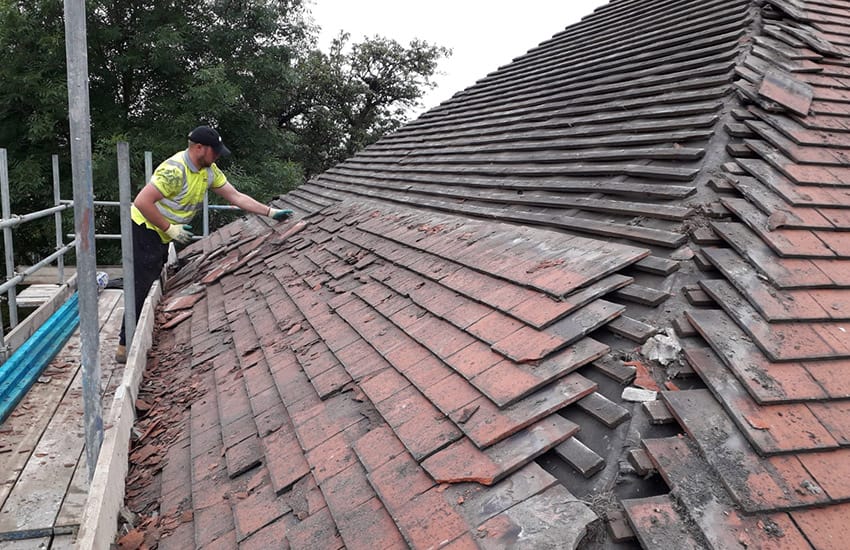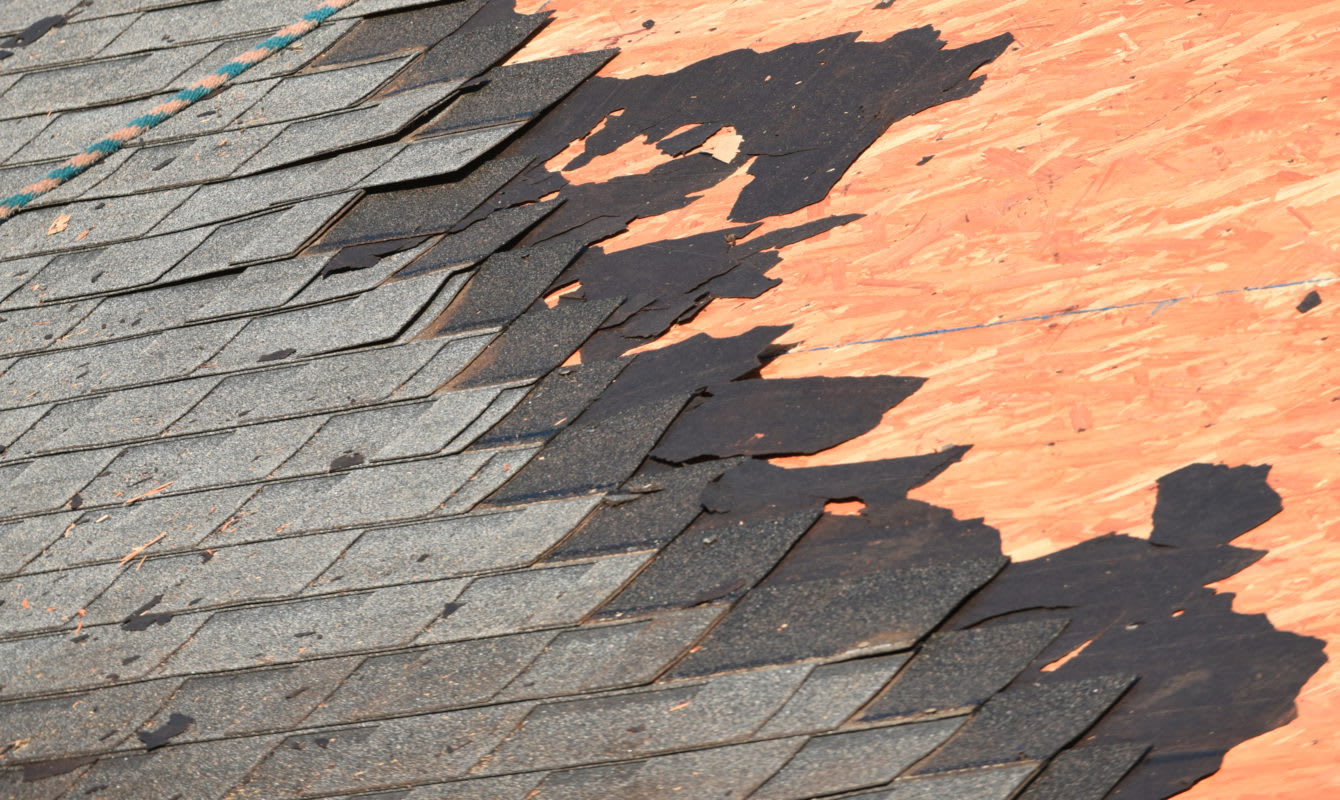Roofers Oahu: Specialist Roof Installations and Services
Roofers Oahu: Specialist Roof Installations and Services
Blog Article
Recognizing the Different Types of Roofings: A Comprehensive Overview for Homeowners
With a range of options-- varying from the standard gable to the contemporary flat-- each kind provides unique benefits and difficulties that ought to straighten with the home owner's certain needs and ecological factors to consider. As we explore the details of different roofing system kinds, it ends up being evident that one dimension does not fit all; the best choice might stun you.
Gable Roofing Systems
Gable roofing systems, identified by their triangular form, are amongst one of the most popular roof styles due to their simplicity and effectiveness in dropping water and snow. This layout features 2 sloping sides that meet at a ridge, permitting efficient drain and minimizing the danger of water buildup. The steep pitch generally related to saddleback roofs enhances their capability to take care of heavy rainfall, making them suitable for different environments.
Along with their useful advantages, saddleback roofs use visual adaptability. They can be adjusted to various architectural designs, from traditional to contemporary homes. The design can also fit added attributes such as dormer windows, which enhance natural light and air flow in the attic room room.
Moreover, saddleback roofs supply enough space for insulation, contributing to energy performance. Homeowners can select from a range of roof products, consisting of asphalt tiles, steel, and tiles, further enhancing personalization alternatives.
Regardless of their benefits, gable roof coverings might call for added assistance in locations vulnerable to high winds or hefty snowfall. On the whole, the gable roof covering continues to be a favored selection because of its mix of functionality, resilience, and visual charm.
Flat Roofs
Flat roofs are frequently acknowledged for their minimalist style and functional applications, especially in industrial and commercial settings (oahu roofing). These roofings include a straight or virtually straight surface area, which permits easy building and construction and flexible room application. While they may lack the aesthetic appeal of pitched roofs, level roof coverings supply countless benefits, particularly in metropolitan atmospheres where optimizing area is essential
Among the main benefits of level roofings is their availability. Property owners can utilize the roof room for different purposes, such as roof gardens, balconies, or photovoltaic panel installations. In addition, flat roofs are commonly much more cost-effective to keep and install contrasted to their sloped counterparts, as they call for fewer materials and labor.
Typical products made use of for flat roofing systems consist of built-up roof (BUR), changed bitumen, and single-ply membranes, each offering distinct advantages. In general, flat roofs offer as a useful and adaptable selection for many home owners and businesses alike.
Hip Roofs
Hip roofings are defined by their sloped sides that converge at the top, developing a ridge. This layout stands out from gable roof coverings, as all four sides of a hip roofing slope downwards toward the wall surfaces, giving a much more steady structure. The angle of the slopes can differ, enabling adaptability in building aesthetic appeals and performance.
Among the primary advantages of hip roofs is their ability to endure hefty winds and negative weather problems. The sloped surfaces make it possible for better water drain, decreasing the threat of leaks and water damages. Furthermore, hip roof coverings offer enhanced attic room space, which can be used for storage and even converted into habitable areas.
However, building a hip roof covering can be much more expensive and complex than less complex roofing types, such as gable roofing systems. The extra product and labor associated with developing the slopes and making sure correct structural stability can result in greater expenditures. Regardless of these drawbacks, several home owners prefer hip roofs for their durability, visual charm, and potential for power effectiveness.
Mansard Roofs
Mansard roofs, commonly identified by their one-of-a-kind four-sided design, function 2 sites slopes on each side, with the lower incline being steeper than the top. This architectural design, originating from France in the 17th century, is not only aesthetically enticing however practical, as it makes best use of the functional area in the upper floorings of a building. The high reduced slope permits for more headroom, making it an excellent choice for attics or loft spaces, which can be exchanged living areas.
Mansard roof coverings are characterized by their adaptability, fitting numerous architectural designs, from conventional to modern. They can be built with different materials, consisting of asphalt shingles, slate, or metal, giving house owners with an array of choices to suit their choices and budgets. Additionally, the style allows for the combination of dormer windows, enhancing natural light and air flow in the top levels.
Nevertheless, it is necessary to take into consideration the possible disadvantages. Mansard roofings might require more maintenance due to the intricacy of their layout, and their high inclines can be challenging for snow and rainfall overflow. On the whole, mansard roofing systems incorporate style with usefulness, making them a preferred choice amongst homeowners seeking distinctive building functions.
Shed Roofings
As property owners increasingly look for simplicity and capability in their architectural designs, lost roofings have become a popular choice. Defined by a solitary sloping airplane, a shed roofing system provides a minimal aesthetic that enhances numerous home designs, from modern to rustic.
Among the primary advantages of a shed roofing system link is its straightforward building, which commonly equates to lower labor and material costs. This layout permits reliable water drain, minimizing the threat of leakages and water damages. Additionally, the vertical slope provides sufficient room for skylights, boosting natural light within the inside.
Shed roof coverings also provide adaptability you can try this out in regards to usage. They can be efficiently incorporated right into enhancements, garages, or outdoor structures like sheds and structures. Furthermore, this roof design can accommodate different roofing materials, including steel, asphalt roof shingles, or perhaps green roofings, lining up with environment-friendly campaigns.
Nonetheless, it is important to think about regional environment problems, as hefty snow lots may require adjustments to the roofing system's angle or framework. In general, dropped roofs provide a sensible and aesthetically pleasing option for home owners looking to maximize capability without compromising style.
Final Thought


Gable roofings, characterized by their triangular form, are among the most preferred roof covering designs due to their simpleness and effectiveness in dropping water and snow. oahu roofing. The high pitch typically associated with gable roofing systems boosts their ability to take care of heavy rainfall, making them appropriate for various climates
While they might lack the aesthetic allure of pitched roofs, level roof coverings supply various advantages, especially in metropolitan atmospheres where making best use of room is essential.

Report this page